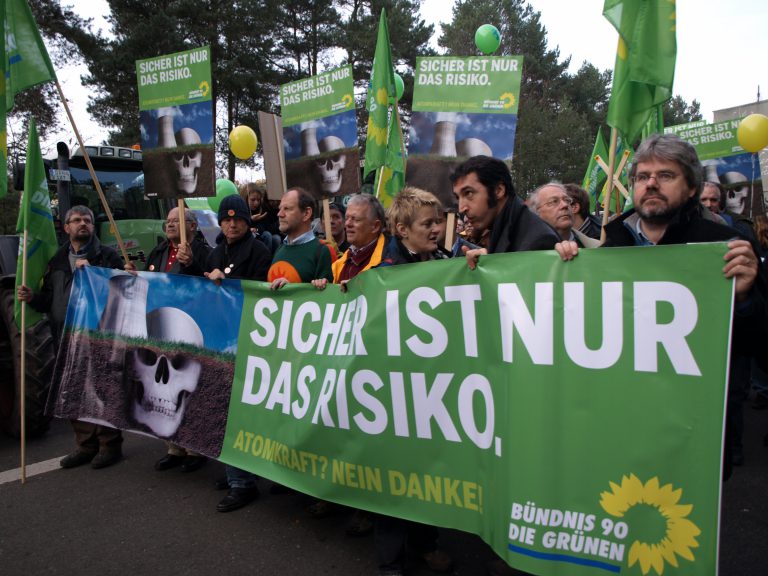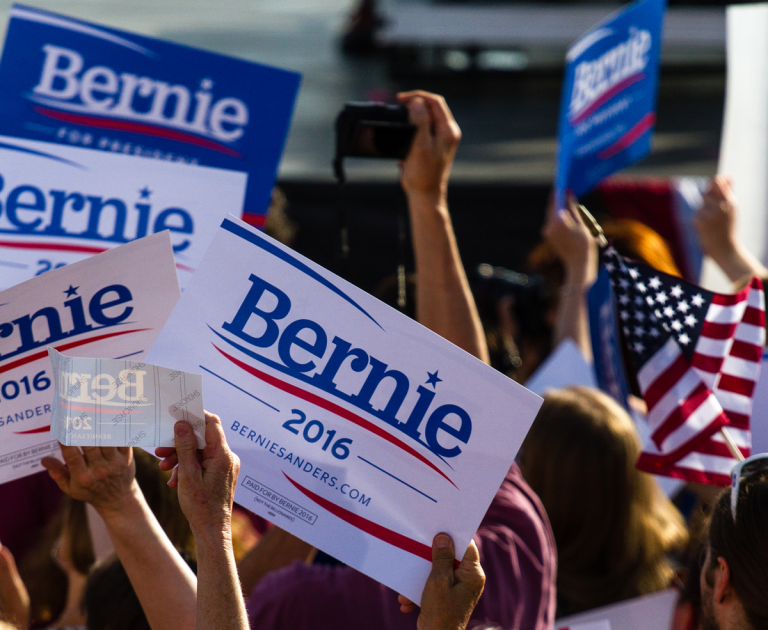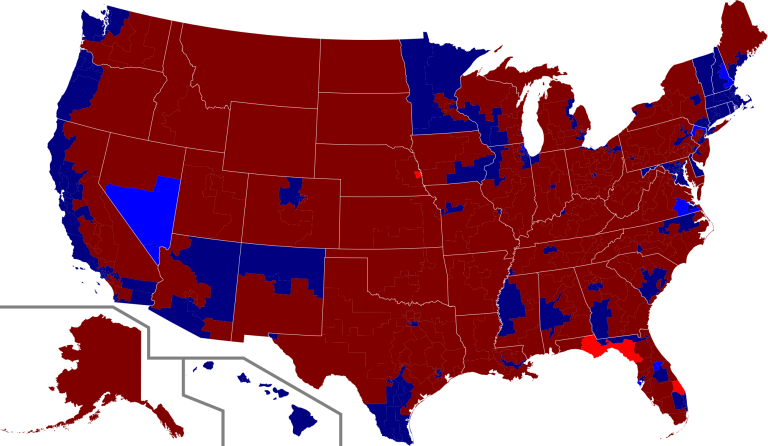Political tactics: Patrick W. Zimmerman. Electoral data analysis: Richard W. Sharp
Hey, you in #theResistance! Psst!
Time to grow up. Protesting is great. Protesting is good. But it’s time to start playing big-kid politics. Time to move out of the streets and into the capitol. The Age of Trump is upon us, and we can no longer afford (in many cases, literally) to sit back and wait for someone else to fix things.
The problems of runaway climate change, racial and gender inequality, healthcare, and an underfunded education infrastructure are complex and will affect the country for generations to come. Who’s going to prioritize these pressing issues? The Democratic Party? Do you really expect the (mostly) same people who’ve been in Congress for 20-30 years to suddenly start acting on problems that they’ve mostly swept under the rug in the interim? Is the party of Pelosi and Schumer your answer?
If not, then the opportunity is ripe for a third party to ditch the no-chance vanity projects of presidential campaigns and focus on actual, concrete, political change. How? By embracing the obvious, that a new party trying to break into the scene should operate under one overarching principle: enter only the fights you have a shot at winning.
So how much do you have to pay to play? The 2016 presidential campaigns of Gary Johnson and Jill Stein spent $12 million and $11 million, respectively, which is just a smidge more than our low end estimate for political viability ($23,378,109.55). Of course, a more savvy actor might spread the love instead of spending it on a year-long public relations campaign. That seems….inefficient, when viewed from a butts-in-office perspective.
In a balanced Congress, a small bloc of seats can give progressives leverage, enough votes to put one of the major parties over the line to pass legislation. With leverage comes the ability to get party policy enacted, a strategy that has repeatedly worked in European Parlimentary systems (this is how regions like Catalunya get autonomy from the rest of Spain without ever having more than 5% of seats).

Die Grünen: never got more than 10% of the vote, got a lot of their platform passed. Photo credit: Paula Schramm
So, we’re going to model a strategy for a hypothetical progressive third party (although the strategy could just as easily be adapted to an Evan McMullin-led or Libertarian-style party). We’ll call this group the Third Party of the US (3PUS), who can focus a nationwide fundraising campaign on 3-10 vulnerable House seats. To remind you, two more “nays” would have sunk Trumpcare (aka the AHCA). Given the persistent divisions in the Republican Party, the House is almost on as much of a knife edge as the Senate, and the tenuous truce between the Bernie and Hillary wings of the Democratic Party is only really unified in its opposition to Trumpism.
It’s time to harness the momentum of angry town halls, of anti-Trump protests, of the Women’s March, of Black Lives Matter, of the Science March. The momentum of a mobilized, passionate, and highly engaged Left. Time to think longer-term. And time to move on from hoping either major party has any interest in significant change to the status quo.
The question
What would it take for a third party to influence policy in a serious manner? What would it take for that party to derail Trump’s agenda?
To put it another way, what could break a near-deadlocked Washington and restore some semblance of science-backed logic to the American polity?
The short-short version
The answer is a shit-ton of money. It’s more money than a third party has ever raised, but not an amount out of the realm of possibility for a national grassroots campaign. It would take $20-$58 million targeted at 8 particularly vulnerable House districts that we have identified below, hoping to bat .500 and win 4.
To put that sum in perspective, it’s 9%-26% of the money Bernie raised for the 2016 campaign. Based on the 2016 House races, we’ve made both a low (assuming avg cost per campaign stays relatively constant at $2.4M/race) and a high (assuming it more than triples to $7.2M/race), multiplied by 8 seats. For comparison, in 2016,
The strategy is relatively simple:
- Stop focusing on glorified PR campaigns like 1-in-a-million presidential campaigns. Not even the people actually running think they can get to 270 electoral votes.
- Focus on what an outsider party can do in the short-term: put all of its chips on the lower-profile but more effective (from a policy change perspective) getting a small bloc of seats in a very-balanced Congress. Call this, for lack of a better name, the “Freedom Caucus Stratagem.”
- Identify 8 particularly vulnerable seats for 2018 (list and criteria below).
- Start recruiting candidates. Ideally, get a few with significant name recognition but with (likely) no prior connection to politics and a demonstrated interest. I want to stab my eyes out, but someone like Mark Zuckerberg or Marissa Mayer makes sense here. Name recognition matters a lot, particularly in a midterm election where voter turnout is lower than in presidential years.
- Start campaigning now. Like, stop reading this and go get out there because Trump’s already launched his.
Why abandon the presidential race? Because the chances of affecting the country for the better by the 2020 campaign are approx. 0.000000000001%. The chances of getting 4 congressmen to use the leverage of swing votes to get important legislation included is much much much higher. How do you get there? The overall hope is that the Democrats and Republicans get so tied up in the sunk costs of high-profile races against each other that, for whatever reason, they let the margins slide, fundraising-wise.
3PUS, here’s your playbook. Your move.
Why the House?
- House campaigns can focus on narrower, issues-based messages more than campaigns that have to appeal to an entire state (senatorial, gubernatorial) or country (presidential).
- All 435 of them are up for reelection in November 2018, meaning neither of the two major parties will be able to focus campaign funds on them as they have in the Georgia 6 special election. Not even the Koch brothers have $40 million to throw at 100 races (probably). Why is this so important? Well, only 17% of the people who gave John Ossoff itemized individual contributions (792 of 4699) came from Georgia residents. That kind of national money is hard to direct at multiple races simultaneously.
- Turnout is lower in midterms, allowing a focused, mobilized group of grassroots voters to have a disproportionate effect on the outcome (c.f. Party, Tea. 2010).
- There are a lot of very vulnerable GOP House members, in large part due to the record-setting unpopularity of their current party leader (you know, that Big Orange guy).
What makes a district vulnerable?
We’re looking at a number of criteria, taking into account the fundamentals (past voting trends in a district), name recognition, and the single issue that is most likely to anger constituents of a member of the party in power: Trumpcare. To get on the shortlist, a congressional district needs to be currently under control of the GOP. As the party in power, it’s both more vulnerable at midterms and also needs to be whittled down in order to get to the tipping-point leverage that 3PUS is gunning for (either the Green or McMullin versions).
We’re looking for current GOP districts that fit as many of the following criteria as possible:
- A district that Hillary won or that Trump won narrowly (by <10%).
- Especially if he did so with a plurality rather than a majority.
- Congressman voted in favor of Trumpcare
- High non-white percentage, particularly Latin@.
- Bonus if potentially near the border with Mexico and would be affected by the Wall.
- High % of constituents in danger of losing Medicaid expansion benefits (expressed as a percentage of the number of votes cast in 2016).
- Somewhat under the radar.
- High profile districts will attract a lot of campaign money from both sides, such as Georgia 6.
- So, we’re looking for ones not appearing in lists of target Republican districts like such as this one put out by DailyKos.
- Have an incumbent with a shorter tenure.
- We are working with the hypothesis that name recognition will matter a lot, particularly local name recognition, in a lot of these races.
The fundraising math
If we use the 2016 Congressional races as a baseline, there were $1,048,182,581 spent on the 435 House races in 2016 by all 1476 candidates. That’s just over $2.4M per seat ($2,409,615.13). As an aside, some hilarious highlights from the FEC data: 33 candidates spent $0. Maybe even better, Adrienne Nicole Edwards spent $1.80 of the $20 she raised running for CA-34 (LA) (spoiler alert: she didn’t win).
That means, if 3PUS targets 8 districts, the total cost should be somewhere between $20-58 million, or $2.5 million-7.2 million per race, for the arithmetically slothful of you out there.
Our low end was set based on the unlikely chance that campaign spending doesn’t increase between 2016 and 2018. The high estimate was based on the also-rather-unlikely scenario that the average cost triples. Since part of the strategy is specifically to avoid races that end up in a bidding war between Democratic and Republican PACs, the case of a single race hitting the $20+ million range should be avoidable. Depending on how well the Democrats and Republicans get sucked into races against each other, 3PUS might get away with as little as $30 million. $40 million is probably a safe bet to hit the 4-seat goal.
In alphabetical order…
Colorado 6 – (Aurora, Eastern Denver suburbs)
- Incumbent – Michael Coffman
- 2016 win margin – 8.3%
- 2016 presidential margin – Clinton +9
- ACHA vote – No
- % voting pop in danger of losing Medicaid – 15%
- Tenure – 8 years
- $ spent on district race in 2016 – $3,574,756.56
- Notes – The Denver suburbs have been subjected to both urban expansion and immigration of minority groups, shifting it from a reliably Republican district to one that has voted for Democrats in each of the past two presidential elections.
Georgia 7 – (Northeast Atlanta Suburbs)
- Incumbent – Rob Woodall
- 2016 win margin – 21%
- 2016 presidential margin – Trump +6.3%
- ACHA vote – Yes
- % voting pop in danger of losing Medicaid – No Medicaid Expansion in state
- Tenure 6 years
- $ spent on district race in 2016 – $390,260.26
- Notes – Demographic shifts in the northern suburbs of Atlanta are putting districts such as GA-06 (hotly contested special election on June 20) and GA-07 in play. 18% Hispanic. State government GOP gerrymandering.
Michigan 3 – (Grand Rapids and environs)
- Incumbent – Justin Amash
- 2016 win margin – 22%
- 2016 presidential margin – Trump +9.4%
- ACHA vote – Yes
- % voting pop in danger of losing Medicaid – 10%
- Tenure 6 years
- $ spent on district race in 2016 – $799297.29
- Notes – Pro-life, pro-“Liberty” guy with anti-Trump leanings, tweeting: “It didn’t take long for the swamp to drain @realDonaldTrump.” Spent more than me took in last cycle (only $200k in the bank). Equal opportunity fiscal conservative who opposes expanded money for the military and funds to address the Flint water contamination crisis.
New Jersey 3 – (South Jersey suburbs)
- Incumbent – Tom MacArthur
- 2016 win margin – 20%
- 2016 presidential margin – Trump +6.2%
- ACHA vote – Yes
- % voting pop in danger of losing Medicaid – 12%
- Tenure – Rookie
- $ spent on district race in 2016 – $1,918,372.99
- Notes – Brokered the deal that got the Freedom Caucus on board with AHCA 2.0, yet brave enough to hold a town hall. It did not go well according to the exit polls: “But next year the public will have a chance to speak. And I don’t think I’m going to vote for him again.” No seniority or money in the bank. Scapegoat quotient: very high.
New Jersey 7 – (Western New Jersey)
- Incumbent – Leonard Lance
- 2016 win margin – 11%
- 2016 presidential margin – Clinton +1.5%
- ACHA vote – No
- % voting pop in danger of losing Medicaid – 6%
- Tenure – 8 years
- $ spent on district race in 2016 – $1,278,475.07
- Notes –Lance has been elected relatively easily most years. A staunch opponent of Obamacare, No vote on AHCA seems somewhat surprising.
New York 19 – (Hudson River Valley and Catskills)
- Incumbent – John Faso
- 2016 win margin – 8.2%
- 2016 presidential margin – Trump +9.3%
- ACHA vote – Yes
- % voting pop in danger of losing Medicaid – 25%
- Tenure – Rookie
- $ spent on district race in 2016 – $2,922,131.30
- Notes – A rookie congressman with a a yes vote on Trumpcare that endangers 25% of his constituents’ Medicaid? That’s a target.
Pennsylvania 6 – (Northwest Philly suburbs and area around Redding)
- Incumbent – Ryan Costello
- 2016 win margin – 14.6%
- 2016 presidential margin – Clinton +0.6%
- ACHA vote – No
- % voting pop in danger of losing Medicaid – 6%
- Tenure – 2 years
- $ spent on district race in 2016 – $2,360,488.65
- Notes – Gerrymandered district.
Pennsylvania 8 – (Suburbs North Philly/Northwest Trenton, Bucks county)
- Incumbent – Brian Fitzpatrick
- 2016 win margin – 8.8%
- 2016 presidential margin – Trump +0.2%
- ACHA vote – No.
- % voting pop in danger of losing Medicaid – 8%
- Tenure – Rookie
- $ spent on district race in 2016 – $2,033130.72
- Notes – “After [Mike Fitzpatrick] won [in 2014], he again confirmed that he would not run for re-election in 2016. …Fitzpatrick’s younger brother, Brian, a lawyer and former FBI supervisory special agent in California, moved back to Pennsylvania to run for his brother’s seat … and won [in 2016].” In the FBI, Fitzpatrick “he served as a national supervisor for the Bureau’s Public Corruption Unit.” Opposed the Travel Ban and AHCA. Opponent will be fighting an uphill name recognition battle.
Best and worst case scenarios

The best-case scenario: Feel 20% of the Bern. Photo credit: Jake Bucci
First, the worst-case scenario: an attempt to replicate Bernie’s 2016 grassroots funding campaign falls way short of the minimum $20 million goal. In that situation, 3PUS is forced to cut back to fewer target districts, leading to a lower chance of reaching a tipping-point bloc of seats. Kobayashi Maru.
Another negative scenario would be for one of the target districts to suddenly, midway through the race, become a hot news item for some reason, causing the financial stakes to quickly escalate above what 3PUS could spend, forcing it to cut its losses as soon as possible and re-allocate future funding to the other 9 races.
In the much-less likely scenario that anti-Trumpism is not a popular platform in 2018, then the whole third party opportunity is likely lost, anyways.
The best-case scenario: 3PUS manages to run a nation-wide fundraising campaign and focus the money on 8 districts. The Republican Party continues to wage a virtual civil war, with right-wing challengers targeting moderate Republicans (or the reverse) in primaries across the country and draining the RNC’s war chest. The Democrats either have a similar break between the progressive and centrist wings of the party or spend most of 2017 and 2018 doing little to stem the Trump Administration (thus opening the door for a third party to claim that role).
A much more likely positive outcome: the GOP and the Democrats become locked in a financial bidding war over so many battleground seats that they cannot allocate additional resources to buttress races targeted by 3PUS.
In 2018, as always, it’ll largely come down to money. 3PUS isn’t going to have nearly as much of it as the two establishment parties, no matter how successful the fundraising. So it will have to be smarter about the money it does have.
What’s next?
This was as much a manifesto and an idea as it was a statistical model. We need to change that and refine, refine, refine the model, adding in additional criteria such as demographic change, population, median income, or racial anxiety indicators (to pick a few examples). While money raised in 2016 is a good start, what we’re really interested in is the potential money that a given incumbent could raise if put under pressure.
Most importantly, the ultimate outcomes of the Trump Travel Ban (in the courts), the Wall (funding on hold), and Trumpcare (through the House, pending the Senate) could change the calculus tremendously, as could something like a major terrorist attack or a war.
And, of course, the scope of ambition can and should depend greatly on the feasibility of fundraising, and how much the Democrats and Republicans throw into the ring(s). If every race now costs $10 million, it’s time to recalculate.
Stay tuned. It’s likely to be a pretty wild 18 months.



No Comments on "A third party ticket to relevance: A House divided"